Author: IGNAS, DEFI RESEARCH; Compiler: Vernacular Blockchain
Bitcoin halving is 3 days away, and Rune Protocol will be launched at the same halving block time! I believe you have heard about Rune Protocol, but I want to share my views on why I am short-term bearish but long-term bullish, how to prepare? And what protocols/tools to use to avoid missing opportunities?
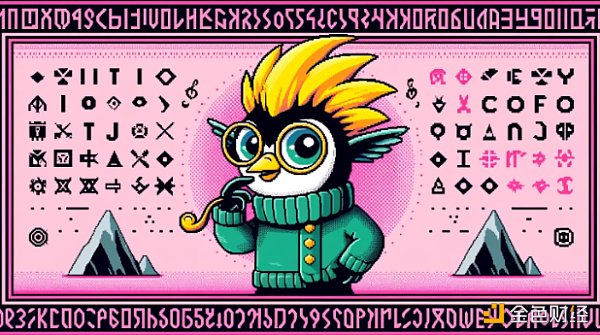
1. Bearish on Rune Protocol (short-term)
I expect the market to remain hot before Rune Protocol goes online. Assets like Runestone, RSIC, and PUPS have surged, and those holding these assets will receive Rune Token airdrops. The new Rune Tokens may perform strongly for a while.
But the market will cool down like the drop after the NFT reveal. Here are a few reasons:
Bitcoin transaction fees will become too expensive for traders with less capital to actively trade Runes (which in turn will drive the Bitcoin Layer 2 story).
Runes probably will not significantly improve the BRC20 trading experience, as UTXO and BRC20 are traded similarly to NFTs.
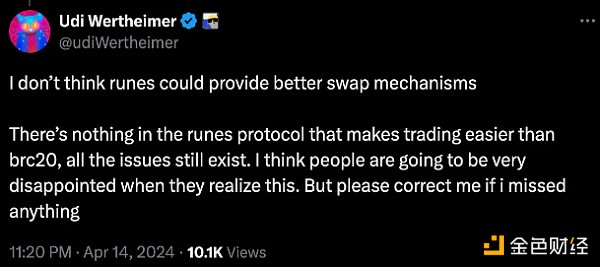
The early UniSat and Ordinal Wallet trading interfaces are the same as BRC20's interfaces, and transactions will include the following two aspects: 1) The number of tokens traded in a transaction, and 2) The price of each package.
The number of new Rune tokens issued will be staggering: dozens or even hundreds of new tokens will be minted every day (at high gas fees), which will dilute traders' attention and capital inflows per token.
In terms of practicality, Rune is a meme coin like BRC20. At least at first, so the "novelty" will gradually fade. Especially if no Rune Token can continue to rise, speculators will lose money.
In addition, Rune 0 (UNCOMMON•GOODS), which was set up by Casey Rodamor himself, will be difficult to hype because it 1) can be minted for free for 4 years, and 2) can only be minted one per transaction.
2. Why I am bullish on Rune Protocol in the long term
If I am not wrong, the hype of Rune will cool down shortly after the launch of Rune Protocol, and the best opportunities will appear after the sell-off.
Here are the reasons:
Speculation on narratives is divided into waves.
The first wave is triggered by excitement about something new. This usually stems from innovative technology or simple meme potential. Meme tokens are a bit like gambling: most meme tokens that rise rarely have a second wave.
However, narrative speculation based on technological innovation has a stronger chance of recovery after the first wave of hype cools down.
Ordinal Inscriptions launch in December 2022. But the first major boom came with the launch of BRC20 in May 2023. Free-minted BRC20 grew quickly, but the second and third waves arrived in late 2023 as developers continued to build.
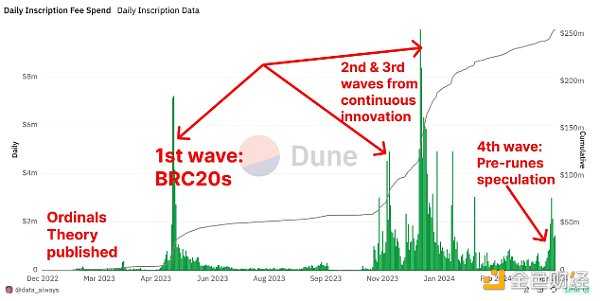
Now we are in the fourth wave of narrative of pre-rune speculation.
While many narratives don’t survive the first wave (check out ERC404 transactions), I believe Rune will have a fifth, sixth, and even more waves.
Here’s why:
Multiple protocols are building infrastructure for Rune Tokens. But it takes time to develop new DEXes/markets. For example, Saturn is building a familiar DEX for Rune, but it will take time to make the user experience smooth. I’ll share more protocols to watch below.
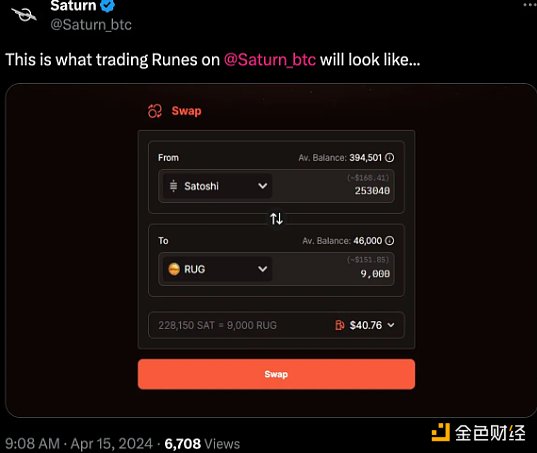
The Rune Protocol aims to consolidate the BTCFi industry around a unified development standard. Just like imagining Ethereum without the unified ERC20 standard - tokens cannot be exchanged between Aave and Uniswap. This is what is happening with Bitcoin right now. Before Rune, we had BRC20, CBRC-20, ARC-20, BRC-420, etc. It was a mess.
I am also bullish on Rune in the long term because it captures the three pillars of a thriving crypto ecosystem, which is how I frame this bull run.
In my opinion, the success of any crypto ecosystem is driven by three key elements: technological innovation, token minting opportunities, and a compelling narrative. How does Rune fit in with these elements?
1) Technological Innovation: We were told that NFTs and tokens could not be on Bitcoin. However, Bitcoin NFTs have outperformed Ethereum NFTs during this cycle. Moreover, ORDI, the first BRC-20 on Bitcoin, has reached $1 billion in trading volume on Binance.
The trick is to turn fungible satoshis into non-fungible ones. When there is an inscription on them, one satoshi is no longer equal to another satoshi.
This is one of the most exciting zero-to-one innovations of this cycle. If you want to know how we got to this point, you can check out my previous blog post about BTCFi.
2) Token issuance: This is one of the reasons we have cycles in crypto. In every bull run, new tokens pop up like mushrooms after rain and are given crazy valuations. Just like central banks can over-print fiat currencies, we tend to issue too many tokens to keep pace with the increase in funds and attention flowing into the crypto space. Therefore, the market crashes.
This cycle is no exception. I wrote more about how this happened before this bull run started.
However, token issuance has always been the domain reserved for smart contract blockchains such as Ethereum/Solana. Until the Ordinals theory inadvertently gave birth to BRC20.
I was concerned about BTCFi because of its unlimited token issuance. BRC20 (and Runes) can be minted easily without any actual value accumulation because there are no smart contracts on Bitcoin.
But the Ordinals community managed to find a Schelling point that converged by assigning original value to early Ordinal NFTs and airdropping tokens to those NFT collectibles.
Also, since there is no direct value accumulation, all BRC20 tokens are basically meme coins. Only ORDI managed to attract attention as the first BRC20 token, but now PUPS may have crossed the yellow river to become a real meme coin on Bitcoin. The higher the PUPS price, the higher the confidence in speculators.
Finally, the BTCFi ecosystem continues to grow in terms of native tokens, countering meme coins and theorizing the rationale of owning BRC20/Runes as value accumulation tokens. More on this later.
3) Compelling Narratives: Narratives are key to giving life to technical aspects and token economic models, turning them into something people can relate to, trust, and become a part of.
For example, Bitcoin Ordinal exists as an immutable NFT on the most secure and decentralized blockchain, which is a fascinating story. Also, memecoins on Bitcoin? Come on, that’s way cooler than memecoins on Solana or Ethereum.
Crypto Twitter is catching up on the technical innovation of Ordinals/Runes, and the narrative is hot too.
This short-term bearish but long-term bullish scenario is probably the best case scenario, especially if you came late to participate in pre-Rune tokens. Once the hype cools down, you have plenty of time to learn and prepare before the second wave of Rune craze hits.
The best time to learn was yesterday, and the second best time is today.
So here is a brief introduction to Rune.
3. Things You Need to Know About Rune Protocol
The Rune Protocol was developed by Casey Rodamor, the creator of the Ordinals theory, which aims to object to BRC20. Casey doesn't like BRC20, so it is expected that what Casey did to NFTs, he will do again for fungible tokens.
You know, BRC-20 tokens are inscribed on Satoshi using JSON data (a text-based data format). They are traded more like NFTs than fungible tokens. For example, you need to "inscribe" these tokens (through an on-chain transaction on Bitcoin) before selling or transferring them.
In addition, BRC-20 generates "junk" or "surplus" transactions, causing network congestion.
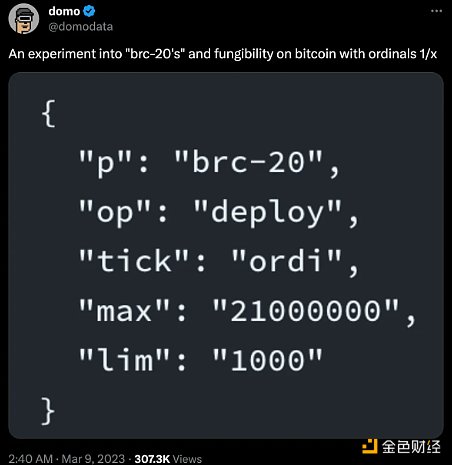
In contrast, Rune adopts the UTXO model, which confuses everyone. Here is my explanation: Ethereum adopts an account-based model, while Bitcoin uses UTXO (unspent transaction output) to track user status and balances.
For example, if you have 1 bitcoin worth of UTXO and want to send 0.3 bitcoin to someone, the transaction will use the entire 1 bitcoin UTXO as input. The transaction then creates two outputs: one that sends 0.3 bitcoin to the recipient, and another that returns the remaining 0.7 bitcoin (minus any transaction fees) to your address as two new UTXOs.
So technically, when you say: "I own 1 Bitcoin," you should really be saying: "I own some UTXO that allows me to spend 1 Bitcoin."
In the example above, when you use a 1 Bitcoin UTXO as an input, that UTXO is 'destroyed' and two new UTXOs are minted: 0.3 UTXO for the recipient, and 0.7 UTXO (minus fees) is returned to you. As you can see, these UTXOs act like NFTs!
However, while each Inscription (like BRC20) is unique, each Rune unit is the same. They are fungible tokens. You can transfer Runes like regular Bitcoin without having to inscribe a BRC20 each time.
In the case of Runes, the UTXO can now store 1 Bitcoin, 100 Rune TokenA, and 50 Rune TokenB, as a Rune Stone.
Tip: Create multiple UTXOs by sending a new wallet the amount of Bitcoin you are willing to invest in each Rune. This way, you can quickly invest in multiple tokens without waiting for the previous transaction to complete, or using Luminex.
Runestones (not to be confused with Rune Ordinals) are a way for Rune Protocol messages to be stored in Bitcoin transaction outputs when you send an Unspent Transaction Output (UTXO).

I share this because once Runes goes live, you will quickly start seeing terms like "Runestones", "Inscriptions", and "Edicts" being discussed on Twitter. People will try to trade runes, but will face problems, and then they will definitely look for answers on Twitter.
Runestones - Rune Protocol messages - can include inscribing (deploying) a new rune, casting existing runes, and transferring runes between different addresses.
Inscription is how a rune is first cast by an "inscriber". Once an inscription is completed, the properties cannot be changed.
4. Background knowledge about runes
Finally, some other simple terms and facts about runes you should know:
Rune names: Initially, only names with more than 13 characters were available; this limit was reduced by one character every 4 months until all names were available 4 years later.
Rune numbers: Indicates the order in which runes were created, starting with "Rune 0", then "Rune 1", and so on.
The first rune UNCOMMONGOODS - free to mint, no supply cap, only 1 UG per mint. 1 UG is basically equal to a Bitcoin transaction fee.
Rune ID: generated based on a transaction block and position, e.g., "500:20"
You can mint runes by entering the rune ID. For example, the RuniGun bot on Telegram will allow minting runes by rune ID. So if you know the ID, you don't have to rely on a third-party UI to mint. You can check this bot here (disclaimer: I'm not affiliated with it, just discovered it on X).
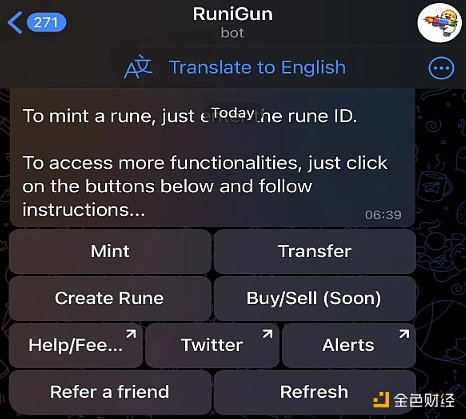
Rune symbol: A non-unique currency symbol for a rune, $, ⧉, or ?, or a universal currency symbol ¤. More technical terms provided by Leonidas.
5. Noteworthy projects, protocols, and tools
I originally planned to write an article on "How to prepare for the launch of the Rune Protocol". However, there are already multiple posts on X that look similar, covering the same protocol.
1) Projects worth watching
The key thing to know is that Rune Games is ongoing, has launched multiple similar pre-run protocols, and promised to airdrop Rune Tokens when the protocol is released after the Bitcoin halving block.
The hype started with the RSIC protocol (RSIC is the abbreviation of Rune Specific Inscription Circuits, an NFT on Ordinals, with a total of 21,000 pieces, 10% of which is reserved by the project party), mysteriously airdropping RSIC NFTs to Ordinal OG/miner wallets.
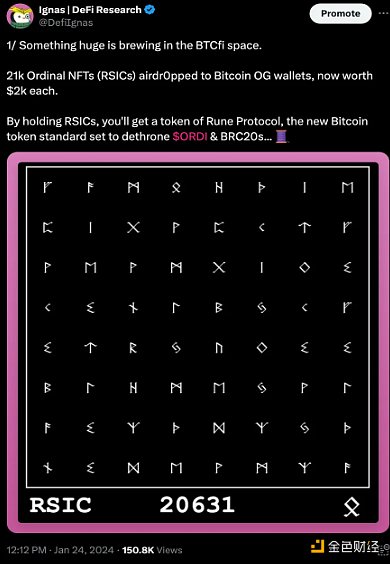
At the time I said that "a huge change is brewing in the field of Bitcoin Finance (BTCFi)", but I didn't really know how it would develop. Now we know that RSIC has launched a competition to attract the attention of rune speculators.
If you don't hold RSIC, I don't think it's the right time to enter: by holding RSIC, you can mine RSIC points and thus get RSIC rune tokens as rewards. In theory, RSIC should be traded at $0 at the time of the halving block.
In response to the RSIC team (keeping 10% of RSIC for themselves and being opaque about the airdrop criteria), Leonidas airdropped Runestone to 112.4k OG wallets. By holding Runestone, you will receive not one, but three Rune Memecoins.
Runestone currently has a market cap of $549 million, making it the second largest (by market cap) item in the pre-Rune collection (after Rune Pups + PUPS).
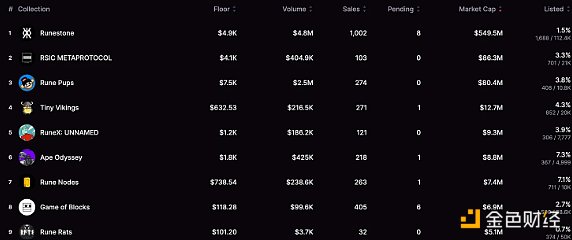
Since RSIC keeps depreciating as it approaches halving, the real RSIC valuation is $588 million based on the price of $0.028 per 1 RSIC rune on whalesmarket.
The total market value of Rune Pups ($80 million) + PUPS Meme Coin ($421 million) is $501 million. Keep in mind that Rune Pups and PUPSToken holders will migrate to Rune at a 23% allocation, with 77% allocated to PUPS.
There are generally good arbitrage opportunities in Rune Pups NFTs, Pups on Unisat, and Pups bridged on Solana.
This is not financial advice, but are you willing to invest at these valuation levels? If my short-term expectations are correct, their valuations should drop shortly after launch.
Regardless, this is a speculative decision that you should make at your own discretion. There are multiple other Rune protocols with valuations below $100 million. A full list can be viewed on Magic Eden.
Nevertheless, I am not planning to sell, I entered this ecosystem early and am willing to hold. In addition, these three major assets are becoming the crosshairs for the Rune ecosystem, and hopefully they can maintain value and receive more airdrops.
In the long term, new protocols will emerge to capitalize on the hype of the Rune Protocol. Here are the protocols and tools to get started.
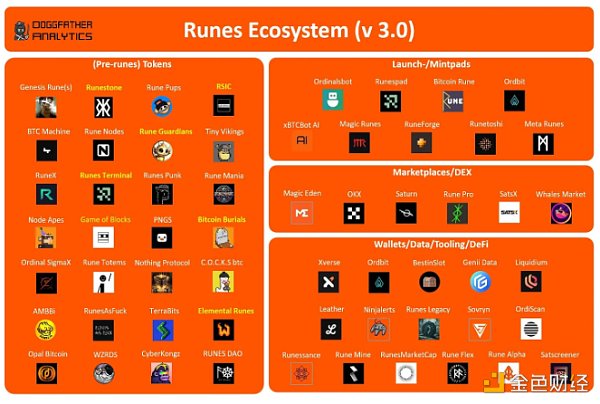
2) Notable protocols
Luminex: mints runes, and can split UTXOs to mint multiple runes in the same wallet. Popularized by Xverse wallet, so it might be good.
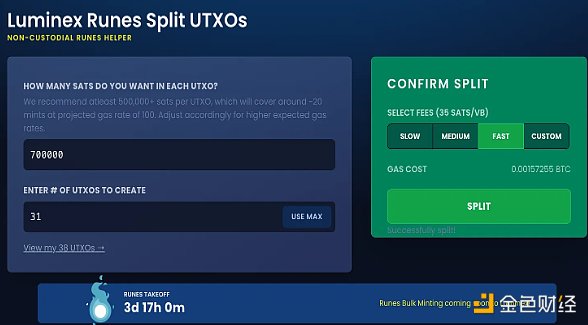
Sovryn: A Runes trading/borrowing platform with its own sidechain. Will be launched at the halving. Sovryn will launch their DEX on Bob L2, the platform I recommended.
RunePro: Building a DEX and engraving protocol. Not yet online. https://twitter.com/Rune_Pro
Rune Bitcoin: Provides rune engraving and transfer services, and is also building a market and a DEX.
Runessance: Provides a lending protocol for Runes and Bitcoin.
Liquidium: Lend Ordinals and Runes. Or earn yield on Bitcoin. Point system is enabled. Liquidium airdrops have bonus points.
Saturn: AMM/order book trading platform for Bitcoin assets. There may not be enough liquidity during rune releases.
RuniGun: Telegram bot for minting, creating and managing runes. Cannot export private keys, so use with caution.
But you might use Magic Eden and Unisat to trade runes, and OKx Web3 wallet if you are a mobile user. Personally, I use Unisat, Xverse and OKx wallet interchangeably.
3) Useful Tools
SatScreener: Real-time token aggregator for the Rune and Bitcoin ecosystem. Due to the poor support of Coingecko/CMC for the Bitcoin ecosystem, Satscreener is the best choice for understanding token information.
Runesmarketcap: Find Rune protocols by source, market value, type, etc.
Runealpha: Rune browser, real-time data, carving (coinage) protocol are all available, very useful.
Runes Terminal: Scanners, minters and launch pads are being built. Has its own ordinal, and will reward RUNI airdrops after halving.
It's still early days, please add the best tools and protocols for other runes in the comments area!
Also, please note that BTCFi is in its early stages. It’s like traveling back in time to the days of Ethereum DeFi in 2019-20, before Uniswap even existed. Opportunities will be plentiful, so be sure to keep learning.
 JinseFinance
JinseFinance















